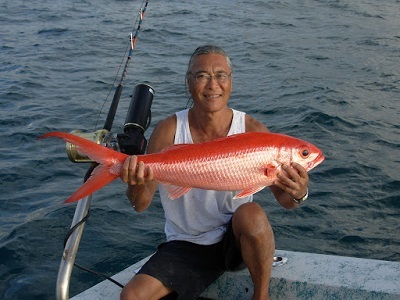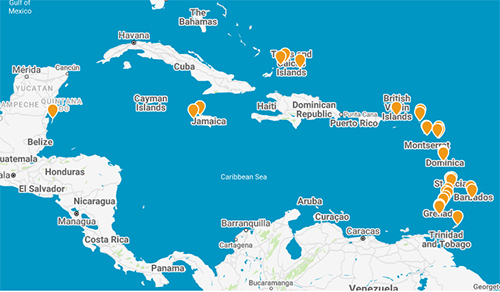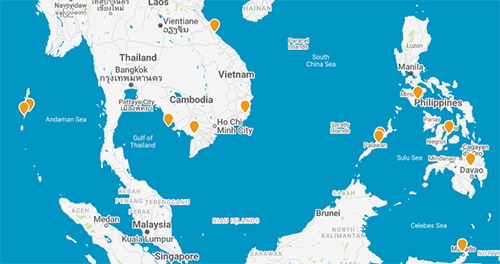- ABOUT US
- PROGRAM AREAS
- CONSERVATION APPROACH
- EDUCATION
- MULTIMEDIA
Global SocMon: The Critical Role of Socioeconomic Data in Coral Reef Monitoring
By Mary Allen, Ph.D., Socioeconomics Coordinator, NOAA Coral Reef Conservation Program
Socioeconomic monitoring is important to track how people use and depend on coral reefs, and to understand human impacts to coral ecosystems so that we can mitigate negative effects while promoting positive benefits. To have effective coral reef conservation, we need an informed and engaged public, and socioeconomic monitoring is a way to bring in the human dimension of coral reef conservation.

The Global Socioeconomic Monitoring Initiative (SocMon) was established by the Global Coral Reef Monitoring Network (GCRMN) in 1997 for the purpose of advancing the global and regional understanding of human interactions with and dependence on coral reef resources. This socioeconomic monitoring is meant to complement the biological and physical monitoring also being conducted by the GCRMN. NOAA's Coral Reef Conservation Program is an active partner in SocMon and I am the Global Coordinator for it.
SocMon is being conducted in seven regions: Brazil, Caribbean, Central America, South Asia, Southeast Asia, Pacific Islands, and Western Indian Ocean. To date, there have been about 145 assessments completed in 42 countries, with more than 21,000 surveys and interviews collected. The SocMon approach substantially involves communities in capacity building, with approximately 700 people trained to conduct socioeconomic monitoring assessments across the regions. A database of 134+ publications is available here, including manuals and guidelines for socioeconomic monitoring, social vulnerability assessments, an approach for integration of social-ecological data, and a spatial tool integrating participatory GIS and mapping into SocMon data.


It is critical to recognize that SocMon is essential for successful conservation and effective management. Without global-level social and economic data, we have a very limited understanding of how people interact with and depend on coral reefs. A common database is needed to store all the regional SocMon data collected, enhance capacities, foster collaboration and integration with all of GCRMN. But even more importantly, SocMon needs support and funding to sustain socioeconomic monitoring long-term and to continue the great work that's been done over the past two decades. A stronger partnership within GCRMN is needed where SocMon and social scientists are included throughout all planning, discussions, and reporting (such as the Global Coral Reef Status Report). Working together in a holistic approach that includes human dimensions is the only way to understand the complex interactions between people and coral reef ecosystems, and how we can sustain the ecosystem services and benefits that people rely on. Over the next several years, GCRMN will strive to better integrate socioeconomic monitoring with biophysical monitoring, and I look forward to strengthening those links between the different types of monitoring.
For more information, contact Mary Allen.
About Us

The NOAA Coral Reef Conservation Program was established in 2000 by the Coral Reef Conservation Act. Headquartered in Silver Spring, Maryland, the program is part of NOAA's Office for Coastal Management.

The Coral Reef Information System (CoRIS) is the program's information portal that provides access to NOAA coral reef data and products.
Work With US
U.S. Coral Reef Task Force
Funding Opportunities
Employment
Fellowship Program
Contracting Assistance
Graphic Identifier
Featured Stories Archive

Access the archive of featured stories here...
Feedback
Thank you for visiting NOAA’s Coral Reef Conservation Program online. Please take our website satisfaction survey. We welcome your ideas, comments, and feedback. Questions? Email coralreef@noaa.gov.
Stay Connected
Contact Us
NOAA’s Coral Reef Conservation Program
SSMC4, 10th Floor
1305 East West Highway
Silver Spring, MD 20910
coralreef@noaa.gov
